Native Texas Park: Rediscovering a lost prairie at George W. Bush Presidential Library
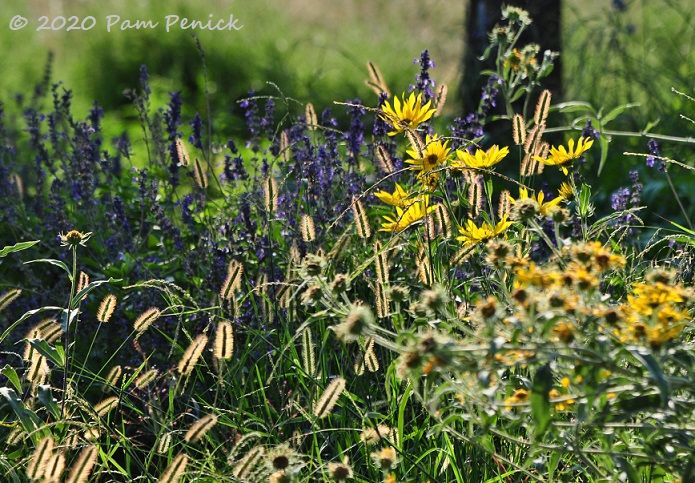
Blackland prairie, a sash of Texas grassland across the center of the state, running southwest from the Oklahoma border to San Antonio, is the most endangered ecosystem in the U.S., with less than 1% remaining, according to Austin environmental designer John Hart Asher in a Wildflower article. One hundred and seventy years ago, bison grazed and fertilized the prairie, and natural wildfires and controlled burns by native peoples kept the land free of trees and shrubs, allowing grasses and perennials to thrive. That ecosystem disappeared when Europeans arrived and claimed the rich land for agriculture and settlement. Today small pockets of preserved Blackland prairie are all that remain.
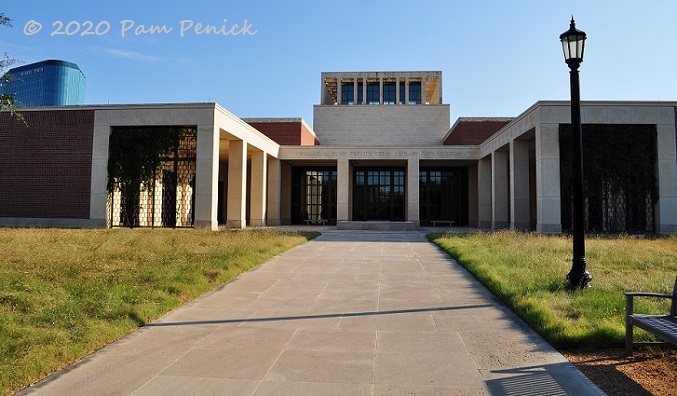
Encouragingly, however, reconstructed Blackland prairie landscapes are increasingly being created for urban sites, like Native Texas Park, a 15-acre prairie surrounding the George W. Bush Presidential Library and Museum in Dallas. Located on the Southern Methodist University campus, just off a busy interstate and overlooked by glass business towers, the park was designed by Michael Van Valkenburgh Associates, Inc., in consultation with the Lady Bird Johnson Wildflower Center, and completed in 2013.
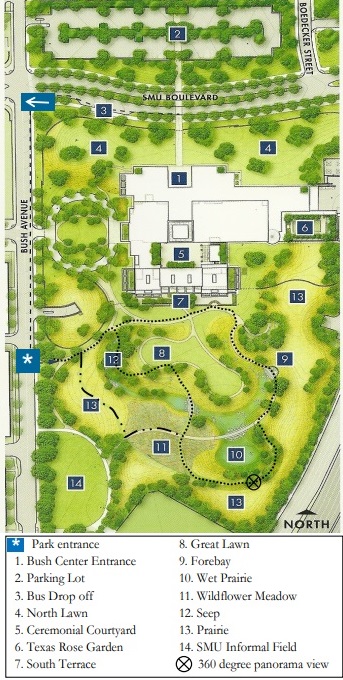
I visited for the first time on a late Saturday afternoon in early October. In the shadow of SMU’s football stadium, where lights were glowing and a game announcer could be heard via loudspeaker, my husband and I found a pay parking lot and walked across the street into the park. Entry to the park is free and open to the public 365 days a year, from sunrise to sunset. (The library and museum are currently closed due to Covid-19.)
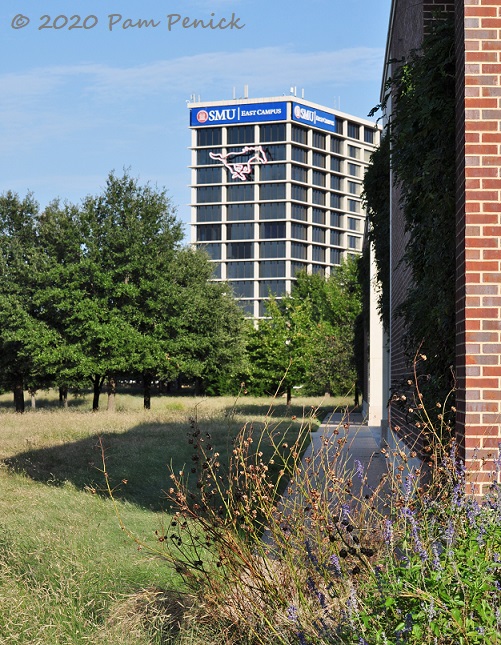
Native Texas Park features one mile of trails, mostly at the back of the Bush Library. But even at the main entrance, a native-blend lawn similar to Habiturf, left shaggy and with seedheads visible, announces that the landscaping is not going to be a mow-and-blow affair.
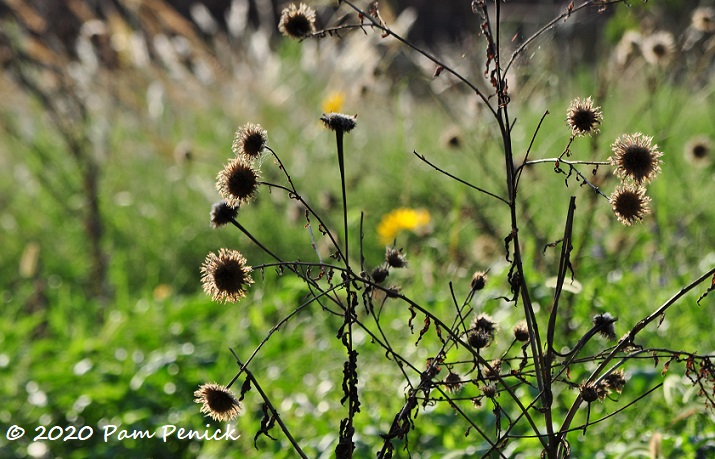
“Many years ago this site would have been a breathtaking Texas prairie,” reads a quote by former First Lady Laura Bush in the park’s brochure. “Today the park is planted once again with native habitat for birds, butterflies and other wildlife. Visitors can experience this state’s beautiful natural environment in the center of Dallas.”
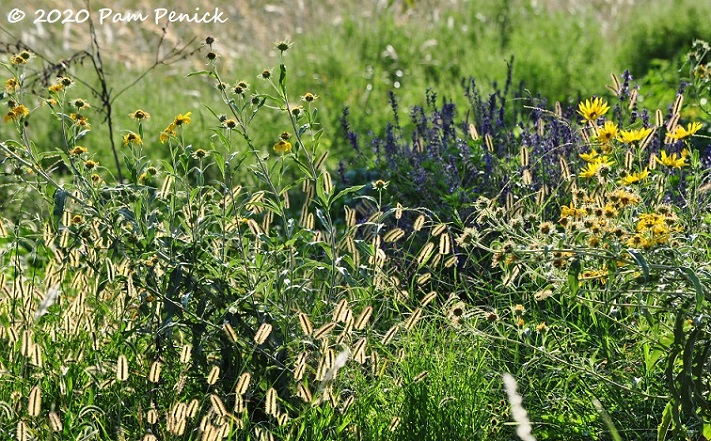
“The site was previously occupied by post-World-War-II housing that was densely developed, almost entirely paved, and conspicuously devoid of open green space. The new landscape puts nature itself at the center of interest for visitors, who can step away from the rush of everyday life in a major metropolis to engage all of their senses in the serene rhythms of plants and wildlife,” according to the park brochure.
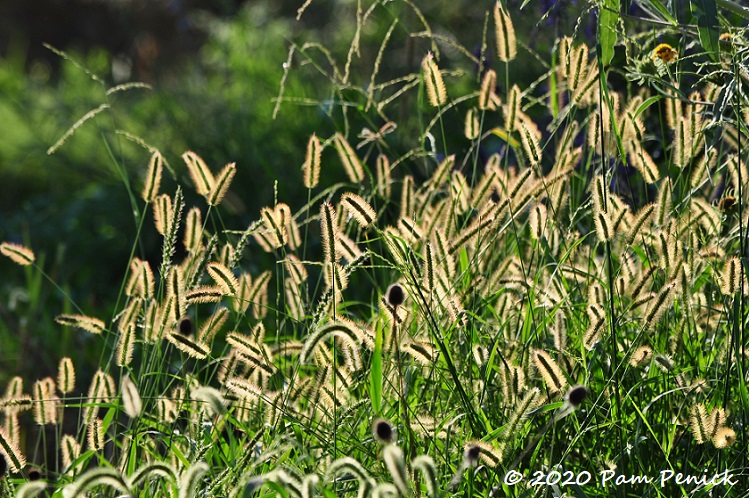
Backlit by the sinking sun, fuzzy grasses were glowing with light.
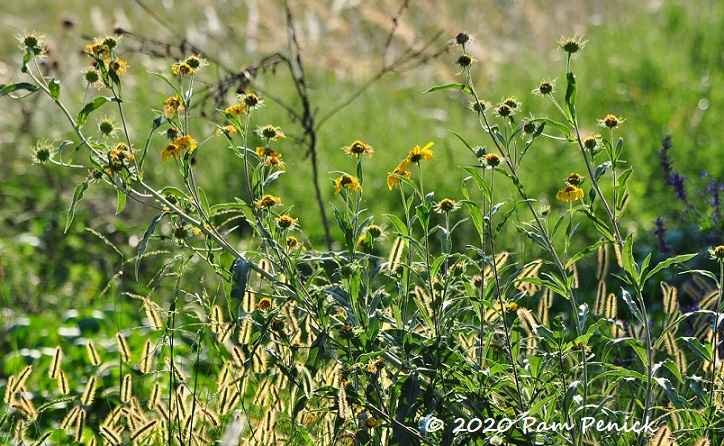
Golden flowers too
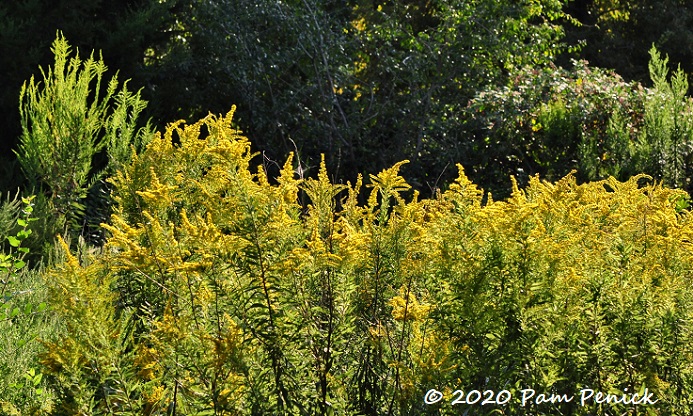
Tall goldenrod stood shoulder-to-shoulder in mustard-colored glory.
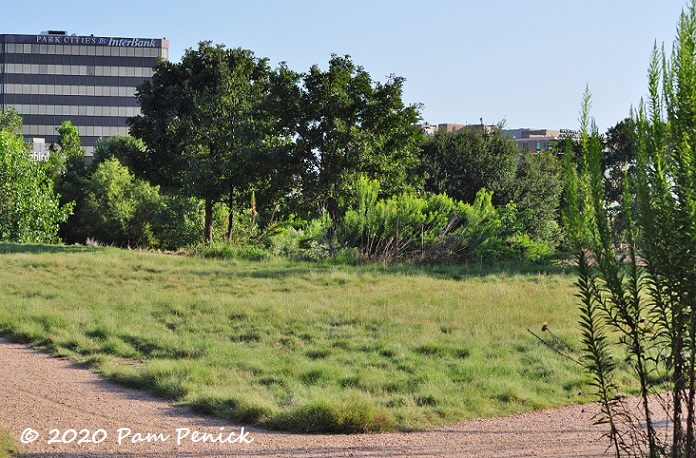
In the center of the trails, a native lawn provides open space. It’s a blend of short-grass native grasses — buffalograss, blue grama, Texas grama, poverty dropseed, and curly mesquite — which requires minimal mowing, watering, and fertilizing. While not suitable for high-traffic areas or athletic fields, once it’s established it can be mowed to a height of 3-4 inches for a more traditional look, according to the brochure.
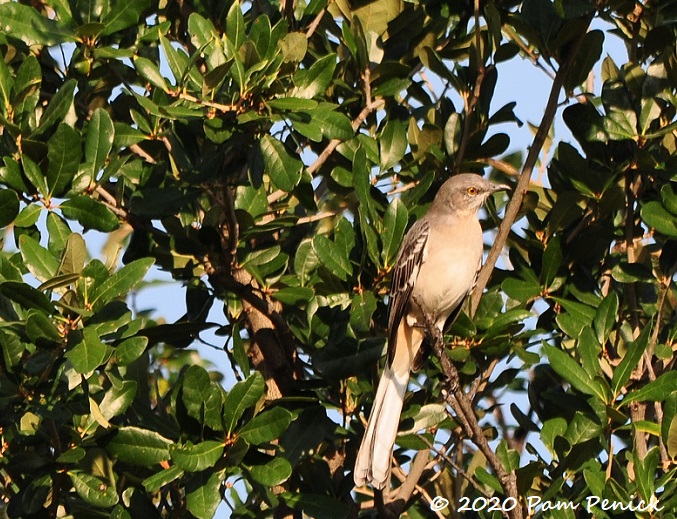
A mockingbird, Texas’s state bird, looked on from its perch in a tree.
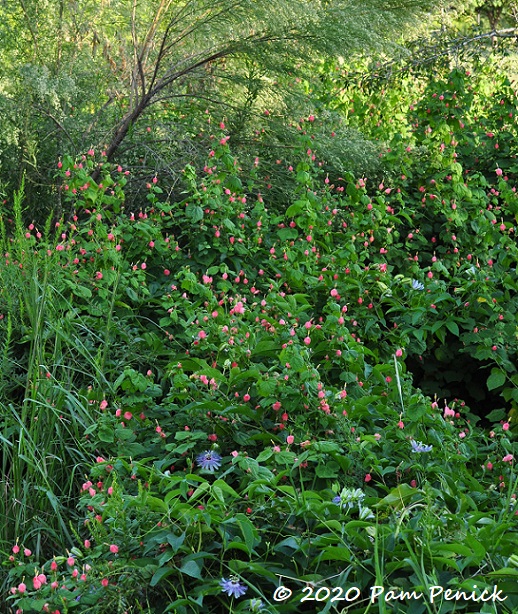
‘Pam’s Pink’ Turk’s cap in full bloom, woven through with purple passionflower vine, made a stunning display.
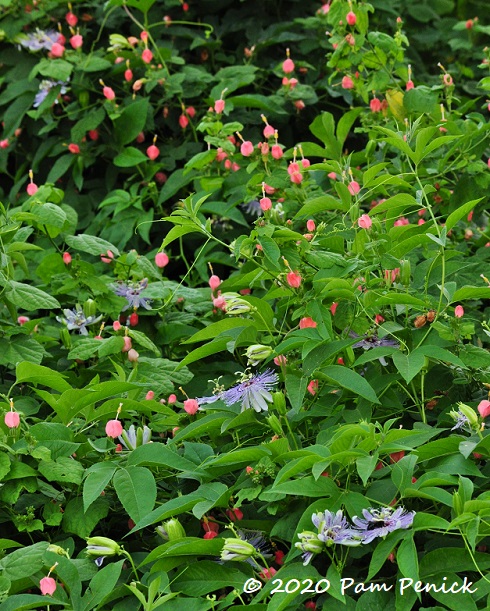
Such easy color — both plants are favorites of mine.
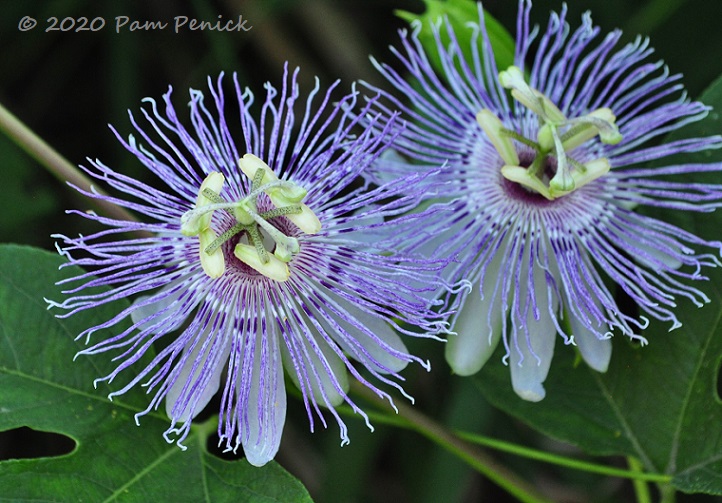
Passionflower’s electric blooms
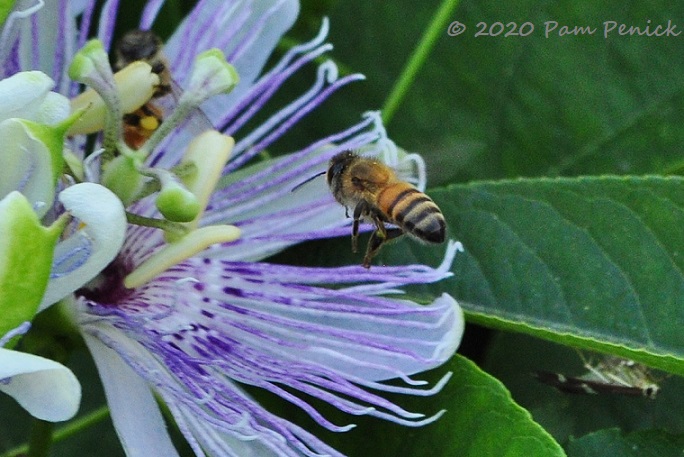
Bees appreciate them too.
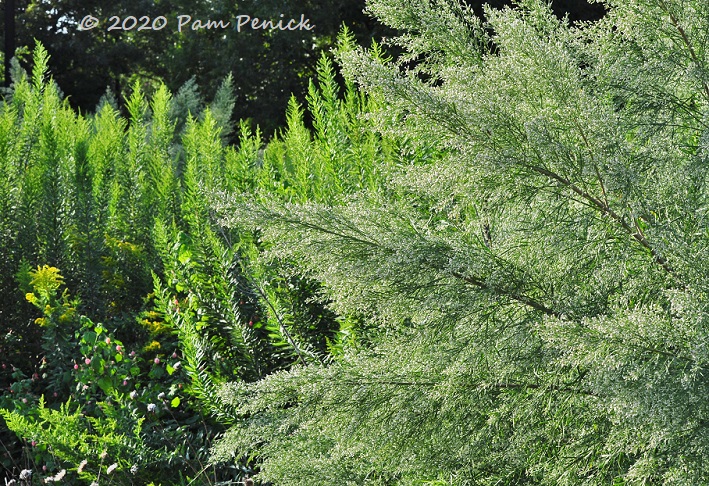
Poverty weed (Baccharis neglecta) displays masses of tiny, white flower buds. (Thanks to Peter Schaar for the ID.)
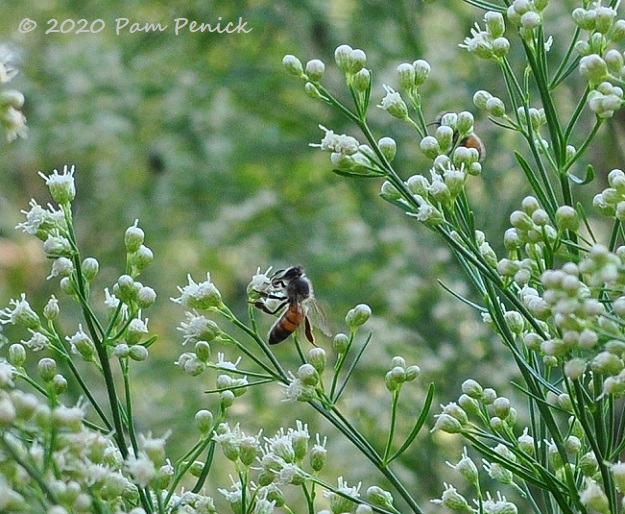
Bees were eager for the flowers to open.
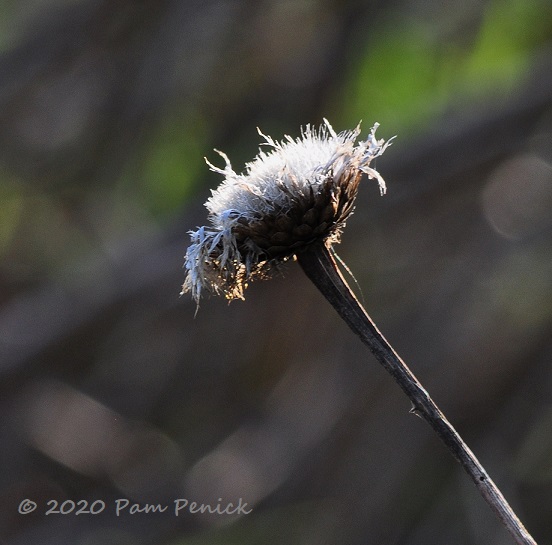
Many summer flowers had gone to seed, but they’re lovely as they die too.
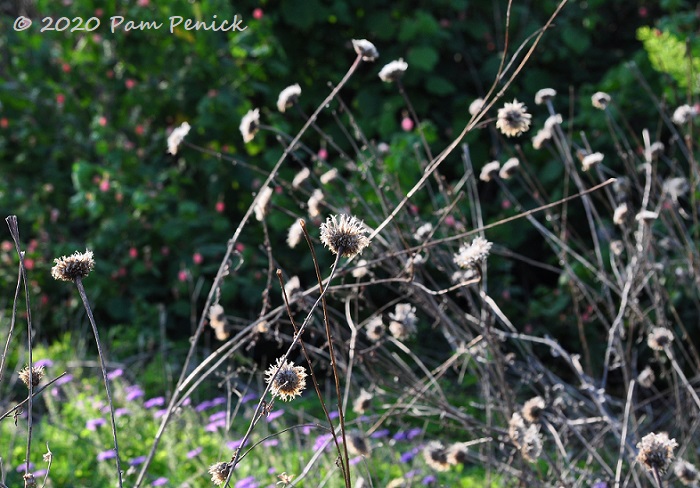
Especially when white, fluffy seedheads catch the sunlight.
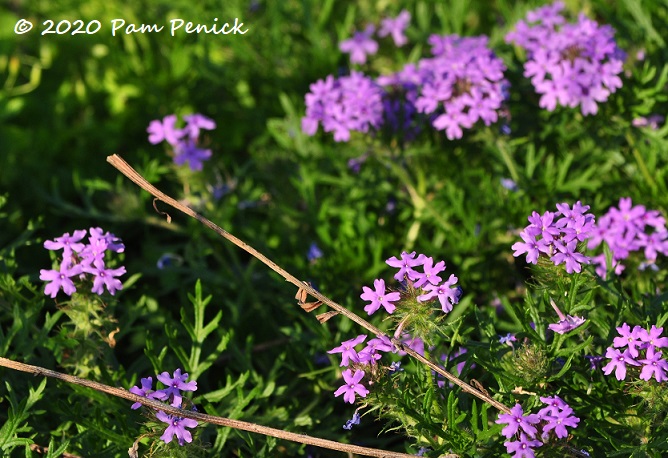
Prairie verbena
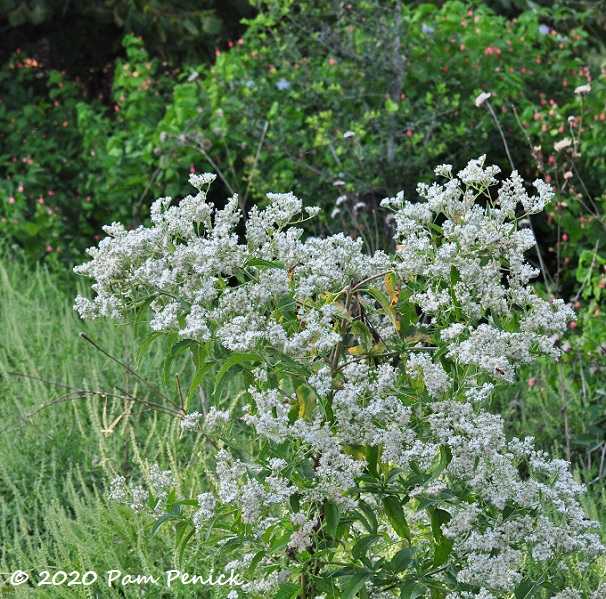
Fragrant white mistflower, or shrubby boneset, is a Halloween-time bloomer in my garden, and in fact it’s scenting my garden right now with its spicy fragrance. It’s one of my fall favorites, and I was pleased to see it blooming here too.
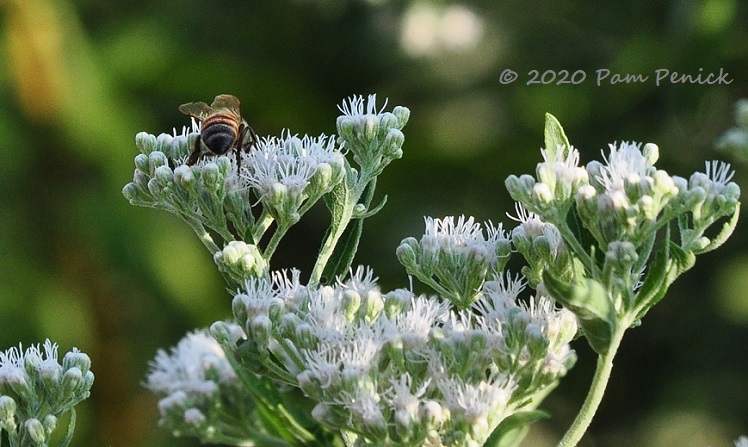
I spotted this cute bee butt on one. Butterflies love this plant too.
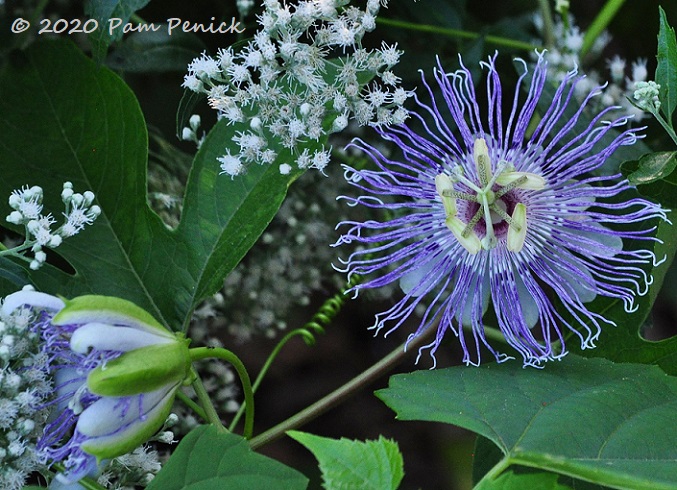
Seeing the way passionflower is allowed to ramble across shrubby perennials like white mistflower and Turk’s cap, I’m thinking about trying this effect myself.
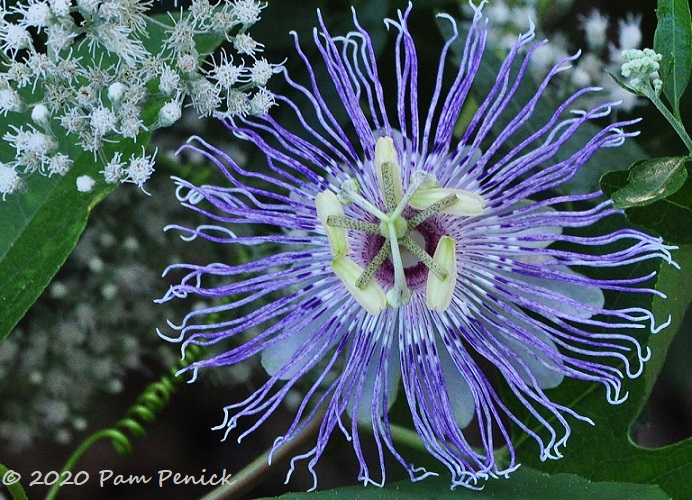
Purple passionflower
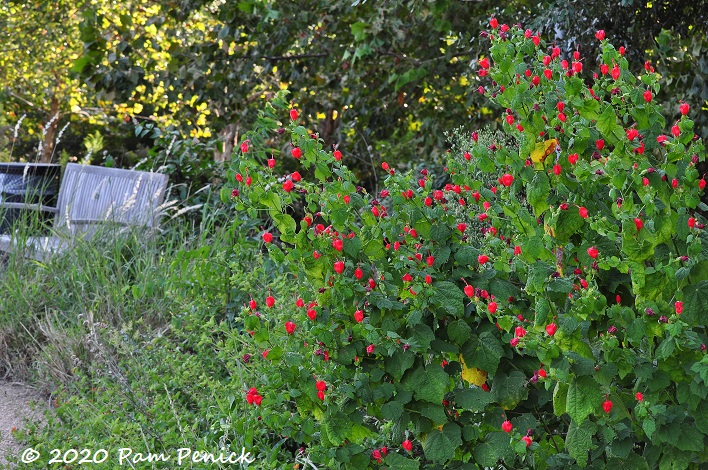
Red Turk’s cap, beloved by hummingbirds, is a tried-and-true native in my own garden.
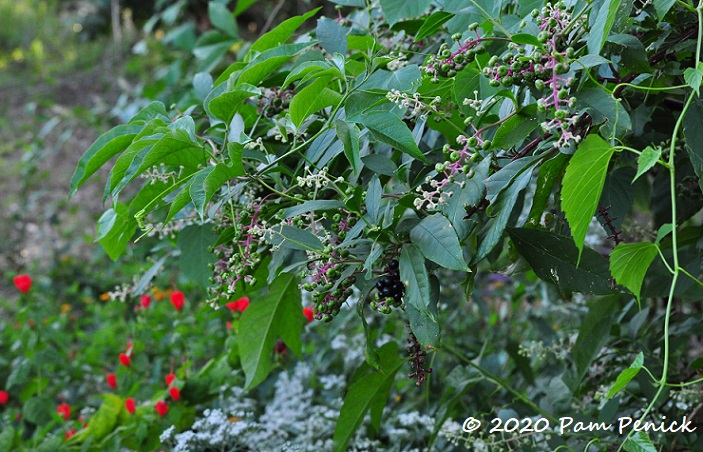
Pokeweed may be aggressively weedy in home gardens, but it’s attractive, and birds love its berries.
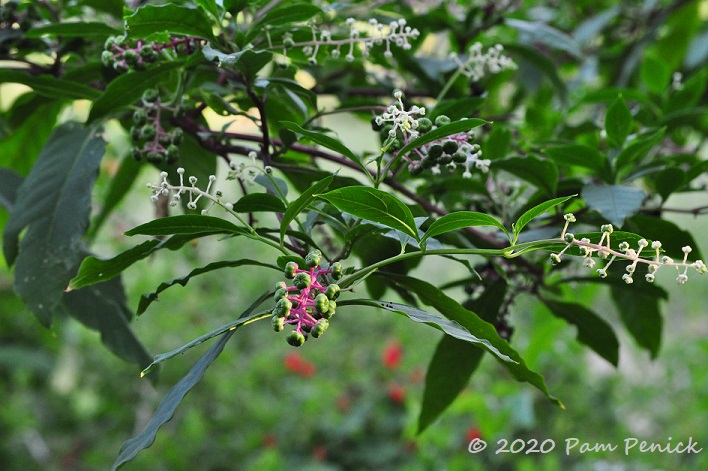
The fruiting stems are particularly pretty, with magenta stems and apple-green berries that ripen to purple-black.
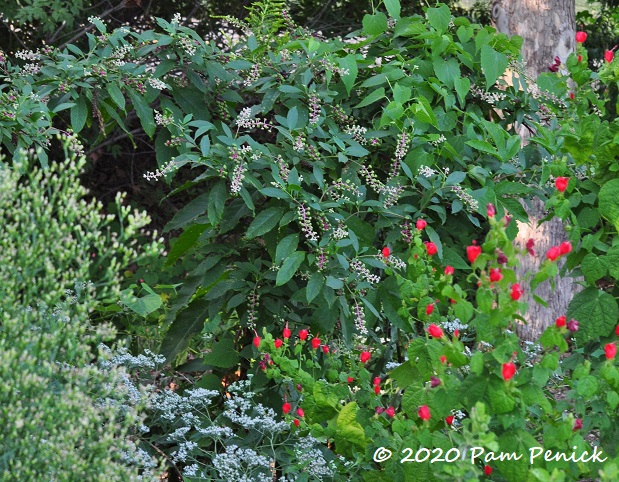
Pokeberry, Turk’s cap, and white mistflower — a bee-, butterfly-, and bird-attracting trio.
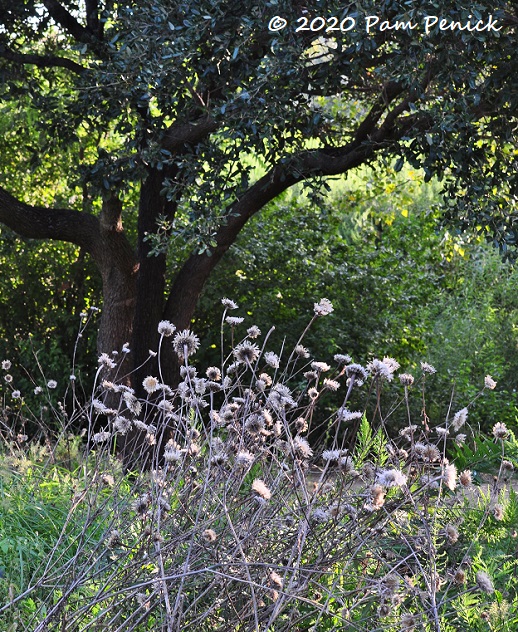
American basketflower gone to seed
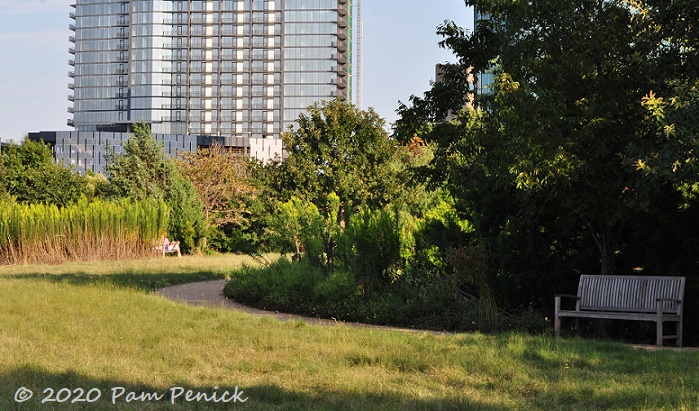
Native lawn and a place to sit and enjoy the view. Tall office buildings overlook the urban prairie park.
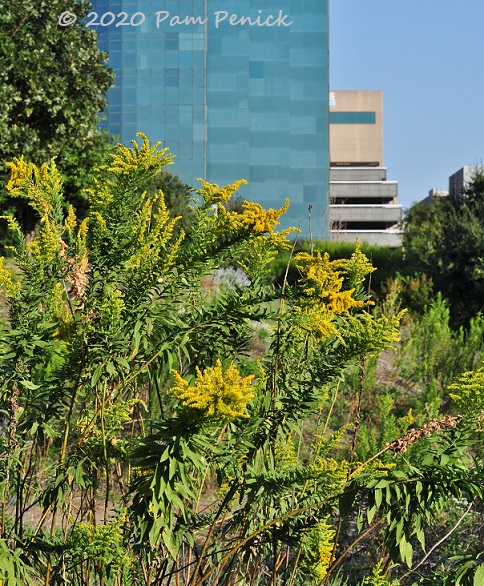
Yellow goldenrod pops against a blue-glass office building.
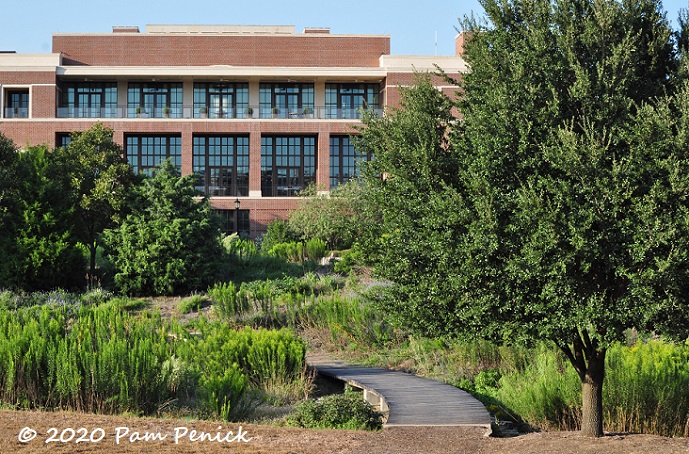
A view of the LEED-certified presidential library from the center of the park
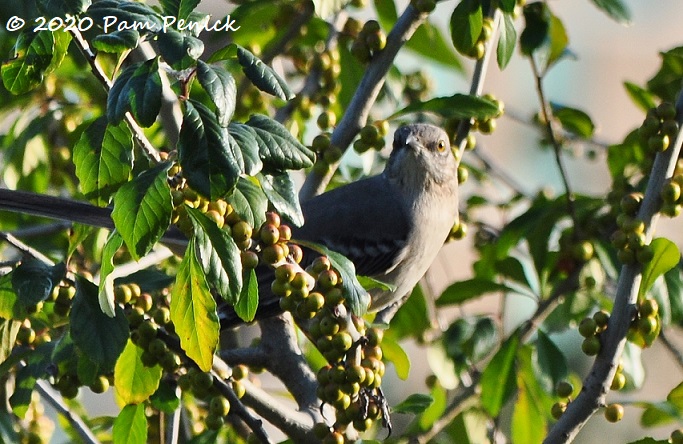
A mockingbird checking on the ripening of yaupon berries?
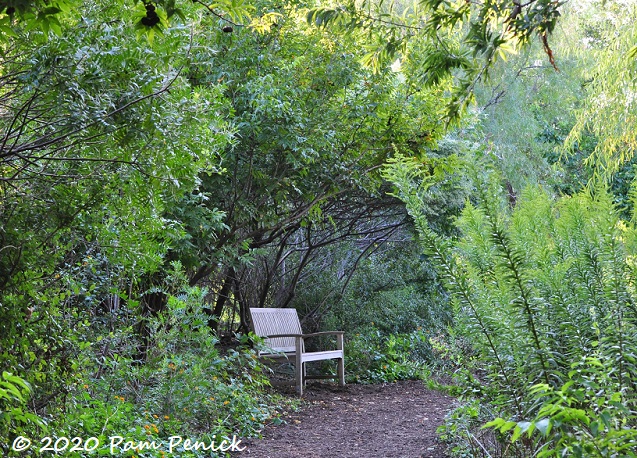
A shady trail leads around a wet prairie…
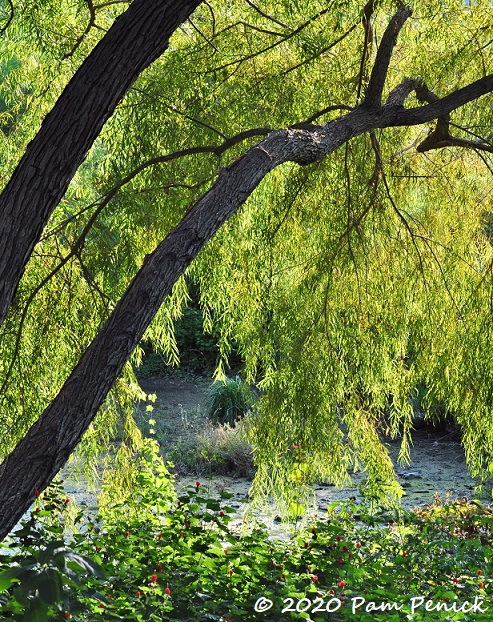
…where water runoff is directed via bioswales and pipes to a 250,000-gallon collection tank, where it’s reused for irrigation.
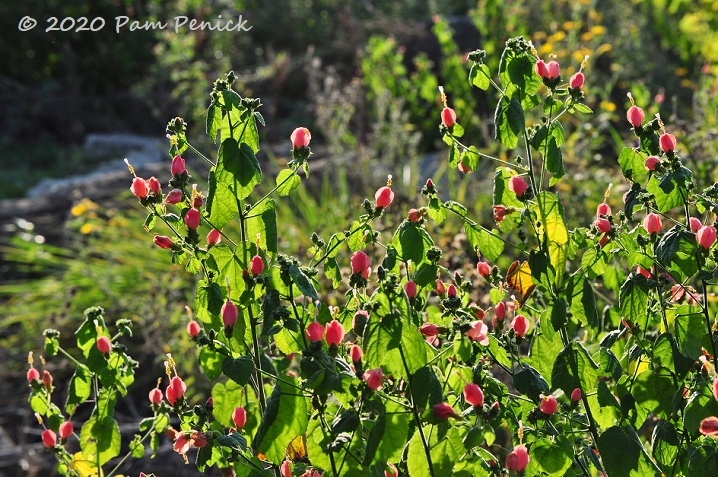
Pink Turk’s cap
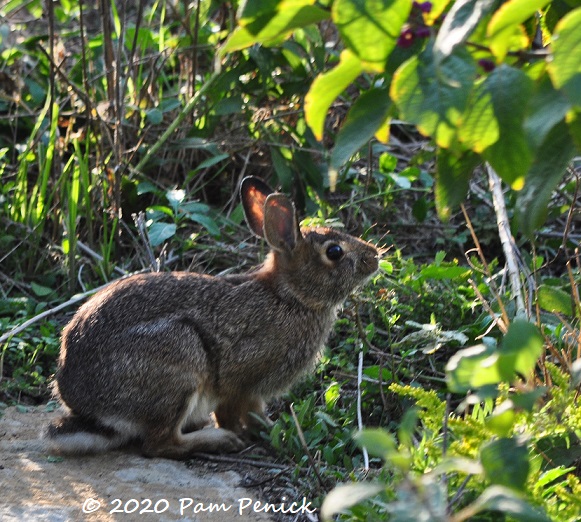
We spotted a number of rabbits here.
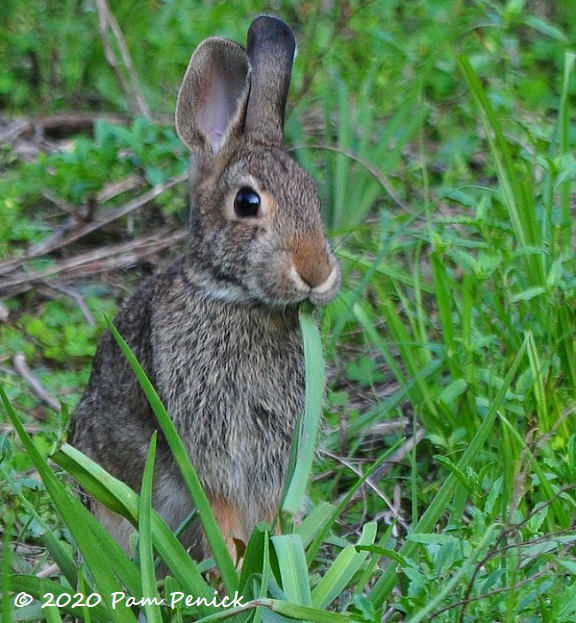
Silflay time
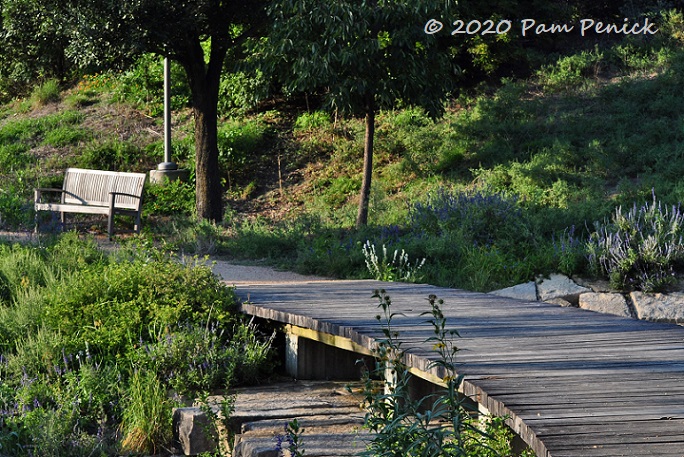
Wooden bridges span the bioswales, in which giant blocks of limestone have been placed to slow down water runoff and give it time to soak into the soil.
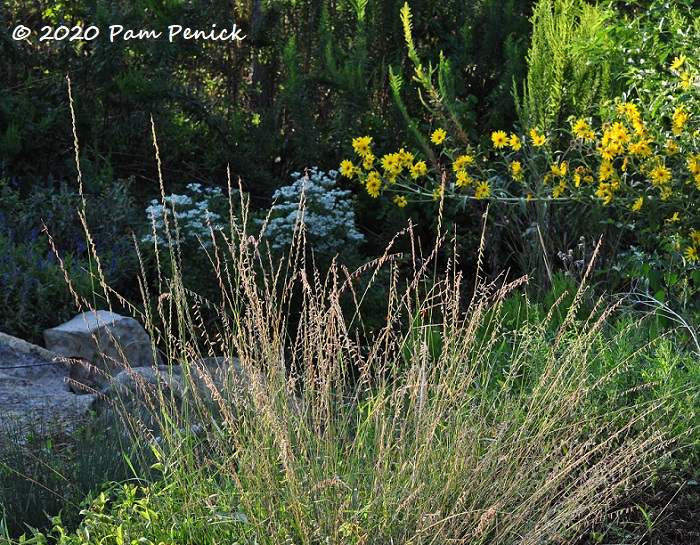
Grasses and sunflowers, a pretty autumn scene
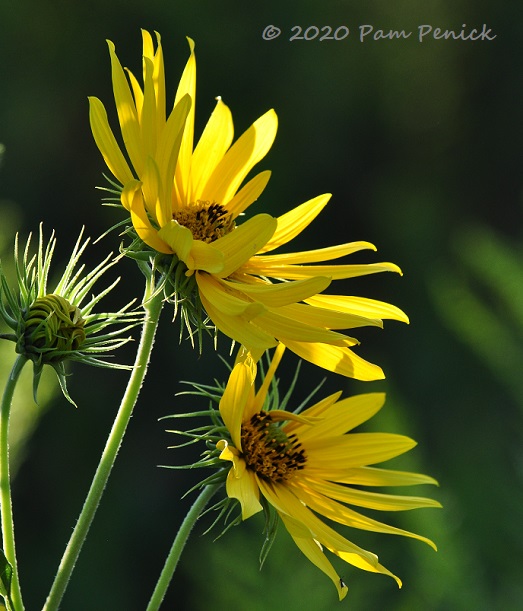
Sunflowers aglow with sunlight
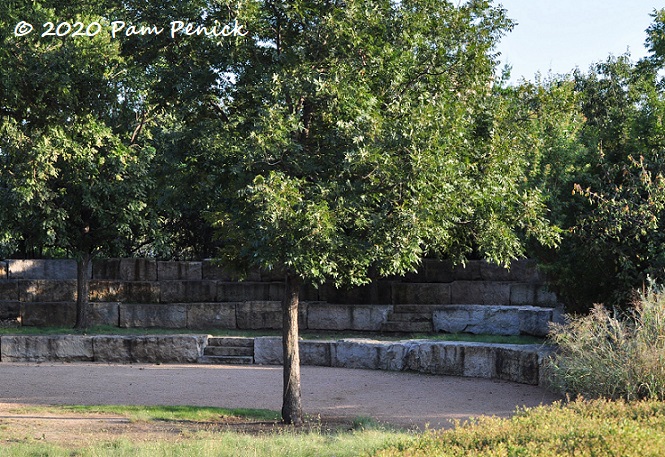
A limestone amphitheater offers seating for a lunch break or an outdoor class.
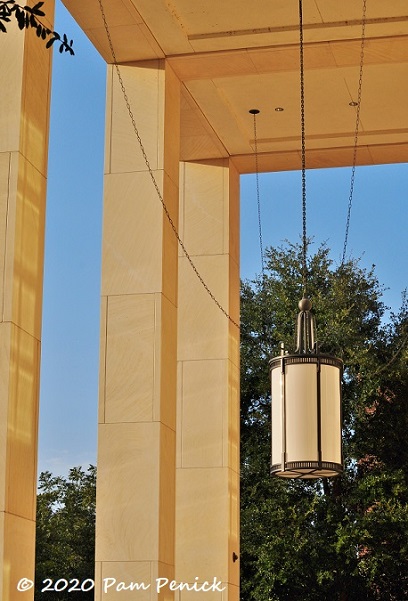
Circling back around to the library, I stopped to admire the creamy stone and elegant swagged light under a portico.
More-formal, straight-line paths lead through a shade garden at the side of the building, where ‘Pam’s Pink’ Turk’s cap was flowering.
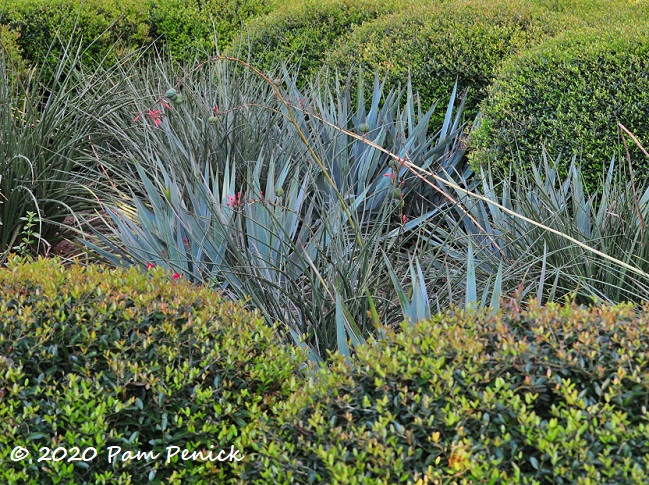
In a sunnier spot, dwarf yaupon hollies surround a spiky mass planting of paleleaf yucca and red yucca.
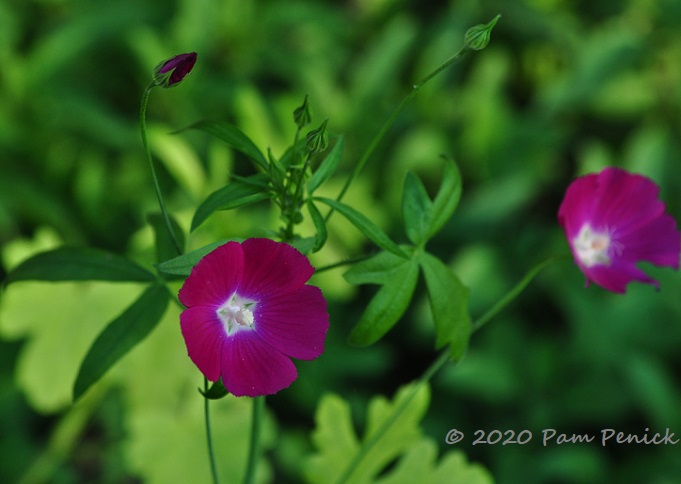
Winecup blooming in October!
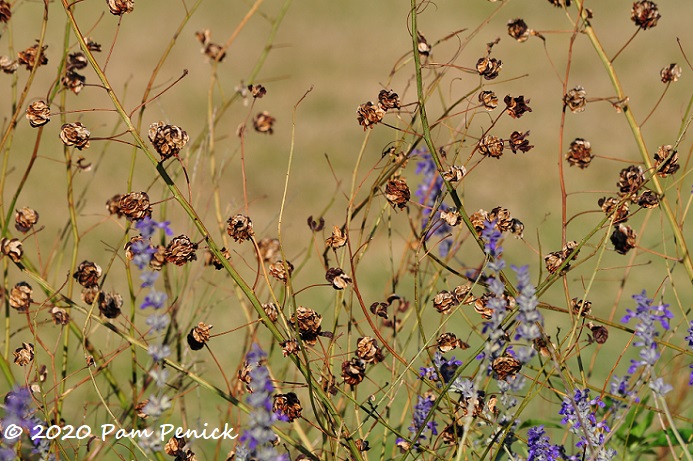
It’s still pretty surprising to see this kind of landscaping in an urban setting, especially in Dallas, which I think of as more traditional and buttoned up than Austin. But maybe that’s changing as we are understanding what a positive impact native plants can have, particularly in an over-paved urban environment. Plus it shows off the natural beauty of one’s home state — if you have the eyes to see it. Not everyone does, and I can imagine that some visitors to the library have complained about the lawns being overgrown and weedy. I applaud the former president and first lady for advocating for a different aesthetic with this park, and for conserving precious resources like water, helping wildlife, and making urban Dallas a little wilder and more beautiful.
For more prairie plants in unlikely settings, check out my post about Michael McDowell’s prairie garden in suburban Plano, Texas, which I visited during this same trip. Up next: A visit to Peter Schaar’s garden in central Dallas.
__________________________
Digging Deeper
Come learn about gardening and design at Garden Spark! I organize in-person talks by inspiring designers, landscape architects, authors, and gardeners a few times a year in Austin. These are limited-attendance events that sell out quickly, so join the Garden Spark email list to be notified in advance; simply click this link and ask to be added. Season 8 kicks off in fall 2024. Stay tuned for more info!
All material © 2025 by Pam Penick for Digging. Unauthorized reproduction prohibited.


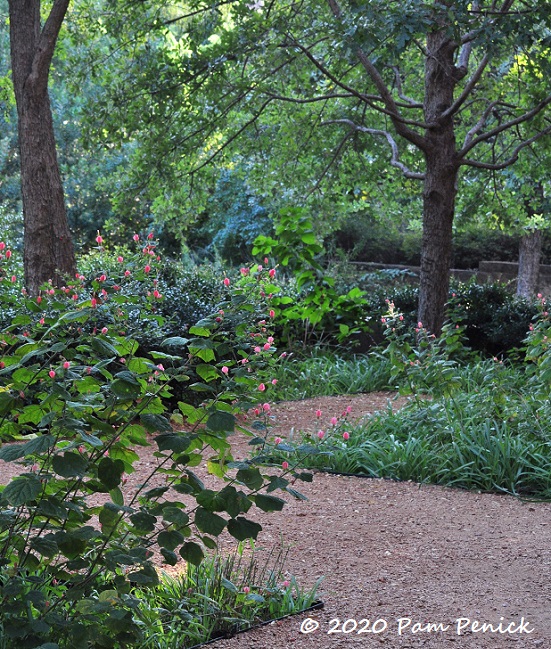
I’m actually teaching a class tomorrow on creating a native plant prairie in the home landscape. Thank goodness for the remaining 1% of your Texas prairie so plants communities can be identified and preserved. What a lovely place!
I hope your class went well, Karin, and I think it’s great that you’re teaching people how to make native prairies in their home gardens.
All beautiful photographs, Pam, although I was particularly taken with the backlit shots of the grasses. You used the angle of light well throughout.
Thanks, Kris!
I like to give a shout out to white mistflower. I have several in my yard next to blue mistflower and while they are mostly green blobs during the year (nice enough green blobs, though) they are amazing in the fall when they bloom because of the MASSIVE number of butterflies and bees that cover them. Hundreds of butterflies everywhere; the plant has a constantly moving corona of fluttery life around it. Totally worth it, every year.
I LOVE white mistflower too. It’s one of my favorite autumn scents, and the white flowers are so pretty. Plus it’s tough as an old boot. And yes, they do typically attract lots and lots of butterflies and bees, although mine are strangely quiet this year, which makes me worry that the pollinators are being poisoned by mosquito control services at neighboring houses. I hope not!
Very useful to see these plants utilized in an urban setting. A lesson for us all. So glad to see Bush making this statement.
And I’ve been searching for a spot for passionflower! Thank you!
There you go! I agree it looks like a fun way to grow it — as a rambler, not a climber.
Well that’s just lovely! The contrast between the tall modern buildings and the wild natural landscaping is striking.
It is, and what an amenity to those who live and work nearby.
I really enjoy your blog, Pam! I have not been to SMU but it’s on my list- and moving up thanks to this post!
Thanks, Leslie. I’m hoping to visit again soon too, maybe next spring.
Growing up in the Dallas-Fort Worth area, between the two cities was mostly prairie 50 plus years ago. The nearby suburb called Grand Prairie was exactly that, prior to DFW airport being put in that covered up a big part of it. The rest of it was then developed into suburban homes. But I remember my dad and other relatives going Dove and quail hunting “in the prairie” as they called it then. I think that the developers just looked at all of that flat land and thought it was perfect for throwing up a fast house or a few hundred.
It’s interesting to hear how it looked when you were growing up in that area, Robin. It’s certainly much changed now.
Pam, beautiful photography as usual. You really did justice to the park. The shrub you guessed was bee brush looks more like Baccharis neglecta, Roosevelt bush or poverty bush, to me. There is a nice specimen at the entrance to Texas Discovery Garden in Fair Park.
Thanks, Peter! You might be right.
This is nice to see, Pam. I’m also happy that the former president and first lady are helping to get the word out about native plants and prairies. The water collection system sounds impressive – 250,000 gallons! We just built a berm and swale at the low point in our yard, and are waiting for some rain to see how it works.
Water recapture is a powerful tool in any landscape. I hope yours works well when the next rain comes!
There’s a good booklet for sale in the museum store on site and online for $9.98 that goes into all aspects of the landscaping at the center and what went into the creation of the Native Texas Park. It includes lists of trees, shrubs and flowers planted in the park and photos of common flowers to look for spring, summer and fall. It’s called “The Landscapes of the George W. Bush Presidential Center.”
Thanks for the info, Marilou! Here’s the booklet link from the official shop, for anyone interested: https://bushpresidentialcenter.shoptruespirit.com/Regional/Regional-Gifts/Other/GWBPC-Landscape-Book/p/239768548#
So encouraging to see cities restoring spaces for nature.
It really is.